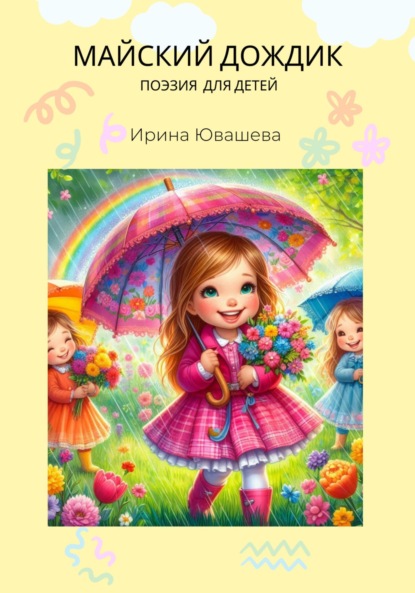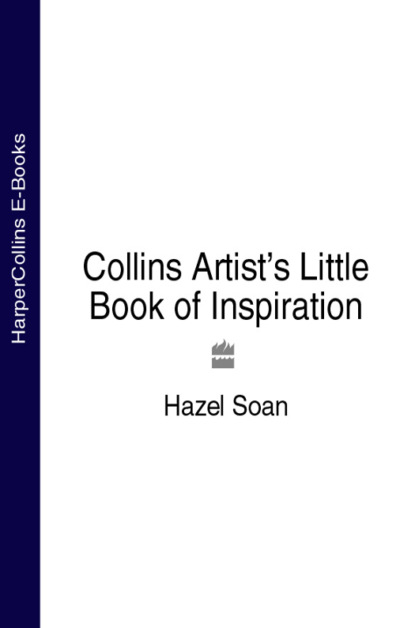По всем вопросам обращайтесь на: info@litportal.ru
(©) 2003-2024.
✖
Collins Artist’s Little Book of Inspiration
Автор
Год написания книги
2019
Настройки чтения
Размер шрифта
Высота строк
Поля
Delacroix
Colour, with all its cheerful connotations, is often the inspiration for a painting. But it is not just the bright colours of flowers, clothing or sunsets that attract the eye. The muted colours that play across a landscape, the subtle nuances of a person’s complexion or the greys of urban drizzle are equally enthralling for the artist, and even the contemporary colours of the plastic world have a garish charm. So with all this wealth of colour around how can you choose what will translate well into a painting, and how faithful do you need to be to the colours you see?
Your painting may look like a view across a valley or a group of children at play, but in reality it is a collection of colours on a flat surface. It needs to work as a painting first, separate from its inspiration, to truthfully tell the tale of the interest you felt in the subject.
Under a different light source, such as sunlight, cloud cover or artificial light, colours may vary quite dramatically. This fact alone frees you from the obligation to copy colours exactly. You can take what you see and exaggerate or mute colours to make the painting stronger. Many subjects that lack immediate appeal are no longer ruled out if you can see the tiny differences between variations of colour.
Interaction of colour
All colours, except the primaries of red, yellow and blue, are made up of two or three of those primary colours; and a colour that contains just two of the primaries looks stronger if placed next to the third. So if you want to bring out the richness of an orange flower, say, or a wonderful head of auburn hair, paint a bluish colour next to the flower or head.
Natural opposites
Opposite colours, such as orange and blue, are called complementary colours because added together they make up the full complement of three primaries. In the natural world we can find numerous complementary colour contrasts.
A dialogue of two contrasting coloured areas dominating the picture, such as beach and sky, make a strong image. Look out for contrasts when the colours are more subtle too: yellow-ochres, red-browns and blue-greys, for instance.
The Patio 23 x 28 cm (9 x 11 in), watercolour The Burnt Sienna of the patio looks very orange. By adding blue, the complementary colour, into the shadows, the orange can be muted. There is a wash of Burnt Sienna and touches of Cadmium Red under the foliage to dull down the greens and prevent them making the pots look too red.
Using colours
In painting we can use the interaction of opposite colours to enhance and detract. By mixing a complementary colour with its opposite we can gradually turn it towards browns and greys.
A colour will push an adjacent colour away from itself towards its opposite. This comparative effect is common to most things in life; for instance, a tall person next to a short person will make the tall person appear taller and the short person seem shorter. A red next to an orange will force the orange to look more yellow, pushing it away from red around the colour circle towards green.
When we look for the effects of comparisons around us colours leap out from their surroundings. Red flowers, for example, look richer on dull days than in warm sunlight as the surrounding cool dull greens push them deeper into the warmth of red. A mauve cloud will make the sky around it appear more blue.
Altered colour
The perceived colours of objects are altered by tinted and reflected light. The white of a boat hull lit by the yellow-orange light of sunset is tinted a golden yellow, while the shadows cast by ropes and fenders take on a complementary blue. Light or shiny-surfaced items reflect brightly coloured adjacent objects. A red tomato on a white kitchen top shares its colour with the surface beneath.
As you paint you will notice more subtle effects. Look for painting ideas on polished wood, crockery against white cloth, or on newspapers and alongside any reflective or wet surfaces.
Coloured light may be fleeting, so keep hold of the inspiration in sketchbook notations or on camera.
Colour and mood
Colour also has temperature; for instance, red is warm, while blue is cool. Reds, yellows and oranges, light bright tones and energetic brushstrokes bestow a cheerful mood on paintings. Subtler warm colours and tones tend to be uplifting rather than vivacious in their effect. Jarring combinations of vivid colours combined with brusque marks can even suggest anger.
Cool colours, especially blues, evoke calm, restraint, or melancholy. If you wish a subject to be peaceful look for the blues within the view, and if you want joie de vivre seek out oranges, warm yellows and reds. Emphasize these with their complementaries.
To assess temperature look carefully at each colour in relation to the next. Ask yourself, ‘Is this colour redder or bluer than that one, even by the tiniest amount?’, ‘Is it colder or warmer?’. It is these differences in colours, one against another, that build any subject into an interesting painting.
In the Morning Light 38 x 28 cm (15 x 11 in), oil on paper This painting is almost all blue with just a few dashes of yellow in the areas of light. The mood created by the blues is easier to read in paint than to put into words; it evokes both tenderness and vulnerability without being in the least depressing.
Christmas at the Ritz Club 20 x 20 cm (8 x 8 in), watercolour Lamplight and firelight bathe the room with a warm yellow glow. Yellow Ochre is the perfect colour for this warm light.
Вы ознакомились с фрагментом книги.
Приобретайте полный текст книги у нашего партнера:
Приобретайте полный текст книги у нашего партнера:





